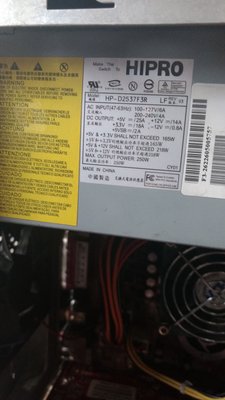The Serpent Rider wrote:No, it's not important. And since it's a 12v rail CPU motherboard, just use some modern PSU, not 15+ years junk.
All of the newer and best PSU's are so expensive for a typical Argie like me, remember, our country is in a financial crisis so this means that everything computer-related has no value at all (Ex. a nice Corsair PSU is around AR$ 2,5k to 3k)
gdjacobs wrote:Hipro is ok, pretty much a mid tier OEM. YMMV, check your capacitors on old electronics, etc.
I checked it inside just for curiosity and all the caps seem fine but they worry me since I can't believe that a well known company uses crappy caps for a mid/high end PSU for OEM use and according to the parts store vendor, the PSU came out of an HP computer
dionb wrote:Odd that a board without ISA would even give a beep about -5V...
Anyway, agreed with The Serpent Rider, this last great Abit board is partly so great because it deviates from AMD spec to draw VCore from the 12V line, so is much more efficient than regular 5V-heavy monsters. And can work with a new PSU too. That said, a good old PSU can be as good as - or better than - a mediocre new one, and HiPro isn't too bad. I'd only replace it with a new one if you can and want to afford a good ±350W Gold-rated PSU from a decent brand, which would probably set you back at least EUR 60.
Sadly I'm South-American, I don't live in Europe and that tag price for a PSU makes me cry so much, because as I said on the response to the Serpent Rider, everything is hard and expensive to afford, and also I would love to get out of this country ;.;
